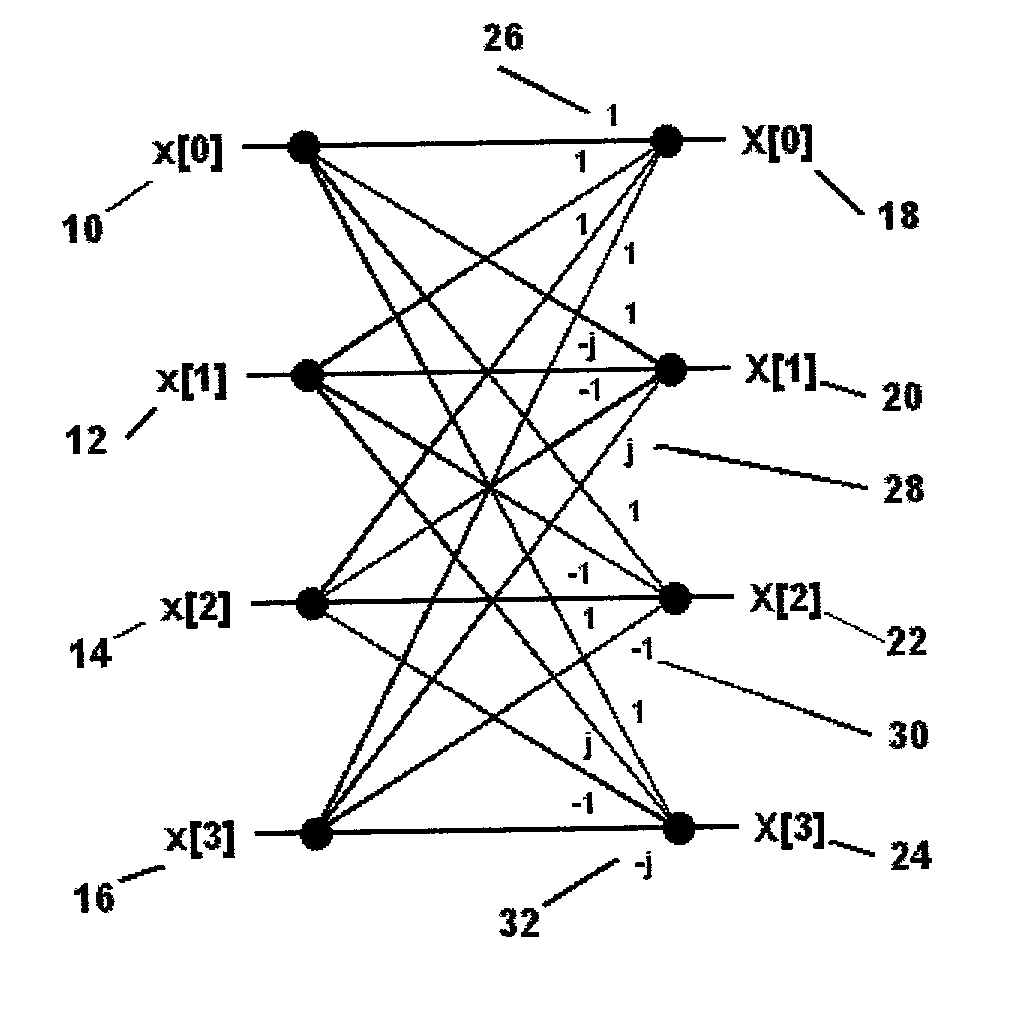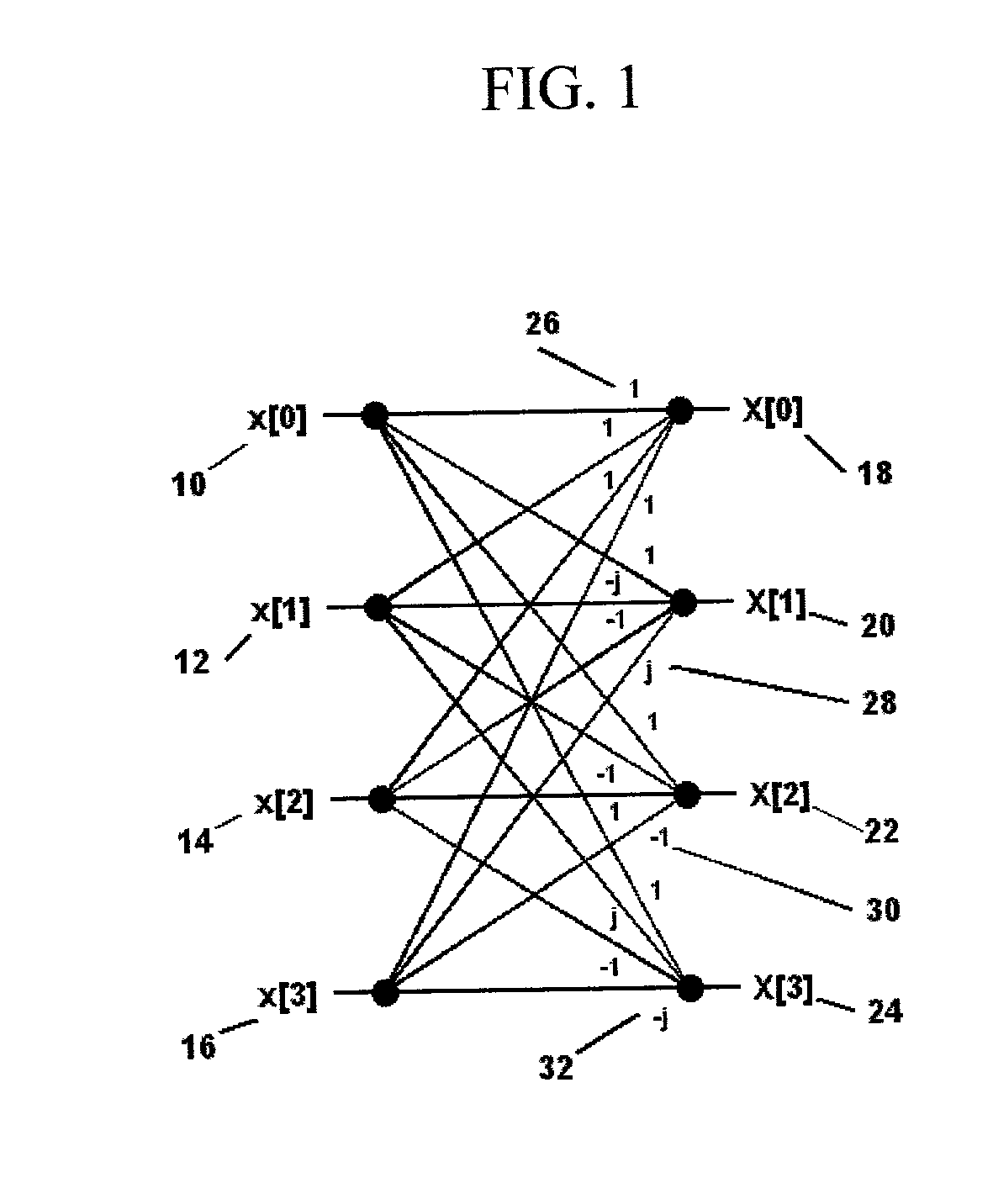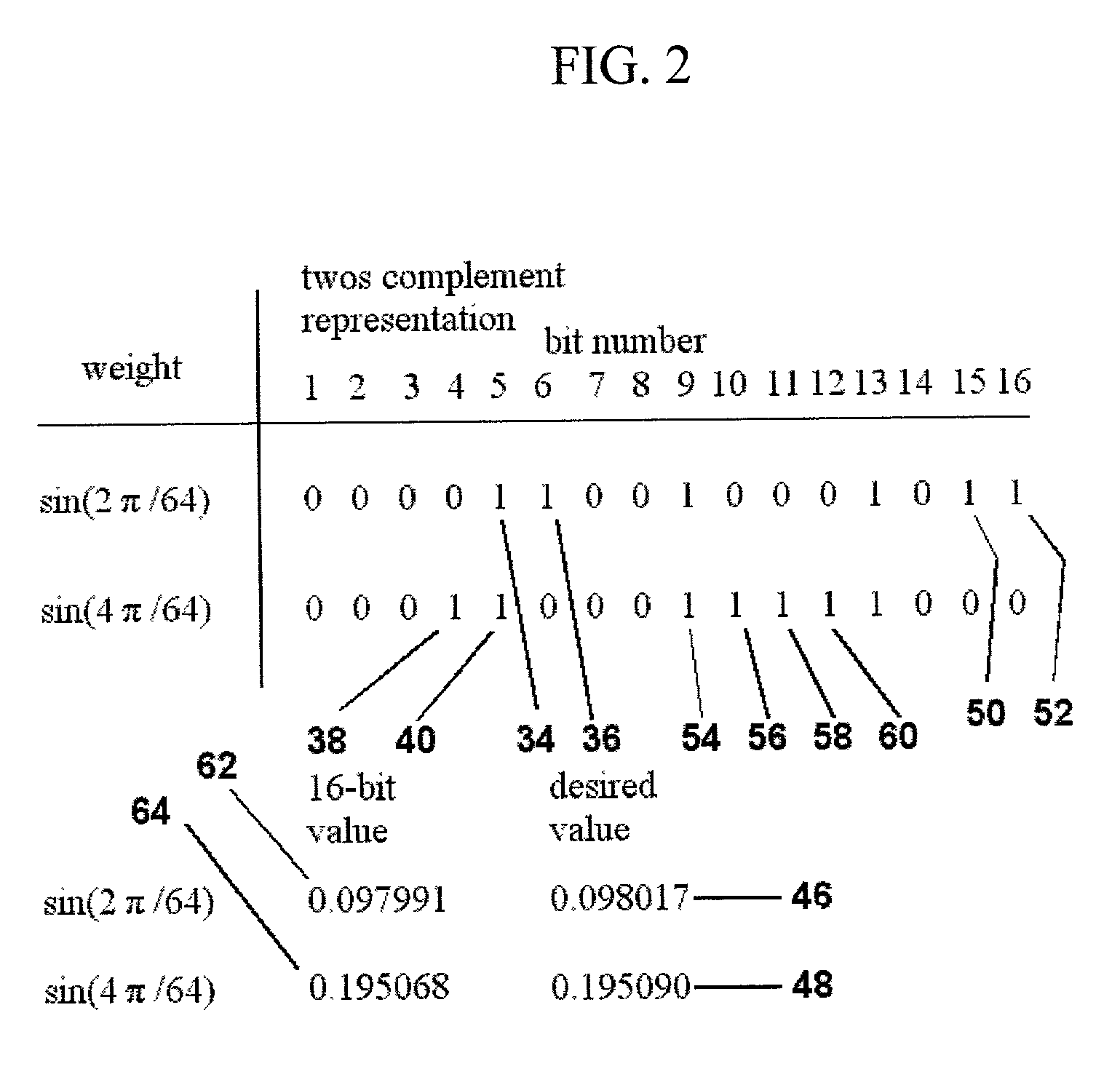Shared multiplication in signal processing transforms
a technology of signal processing and multiplication, applied in the field of number transforms used in signal processing, can solve the problems of complex mathematical operations, processor cycles, and cost measurement of each arithmetic operation in terms of chip space, and achieve the effect of reducing the cost of multiplication operations, and improving the accuracy of multiplication operations
- Summary
- Abstract
- Description
- Claims
- Application Information
AI Technical Summary
Problems solved by technology
Method used
Image
Examples
Embodiment Construction
[0099] The preferred embodiment of the present invention is a machine used in computing one or more sums of products, as described in claim 1. The preferred embodiment comprises a first real number in a first finite-precision numeric format, a second real number in a second finite-precision numeric format, and a third number in a third finite-precision numeric format.
[0100] The preferred embodiment has first real multiplier means for computing a first product equal to the product of the first real number and the second real number, as well as a set of intermediate terms. The preferred embodiment has second real multiplier means for computing a second product equal to the product of the first real number and the third real number. In computing the second product, the second real multiplier means uses one or more members of the set consisting of the first product and the first set of intermediate terms.
[0101] Because at least one computation result of the first real multiplier means i...
PUM
 Login to View More
Login to View More Abstract
Description
Claims
Application Information
 Login to View More
Login to View More - R&D
- Intellectual Property
- Life Sciences
- Materials
- Tech Scout
- Unparalleled Data Quality
- Higher Quality Content
- 60% Fewer Hallucinations
Browse by: Latest US Patents, China's latest patents, Technical Efficacy Thesaurus, Application Domain, Technology Topic, Popular Technical Reports.
© 2025 PatSnap. All rights reserved.Legal|Privacy policy|Modern Slavery Act Transparency Statement|Sitemap|About US| Contact US: help@patsnap.com



